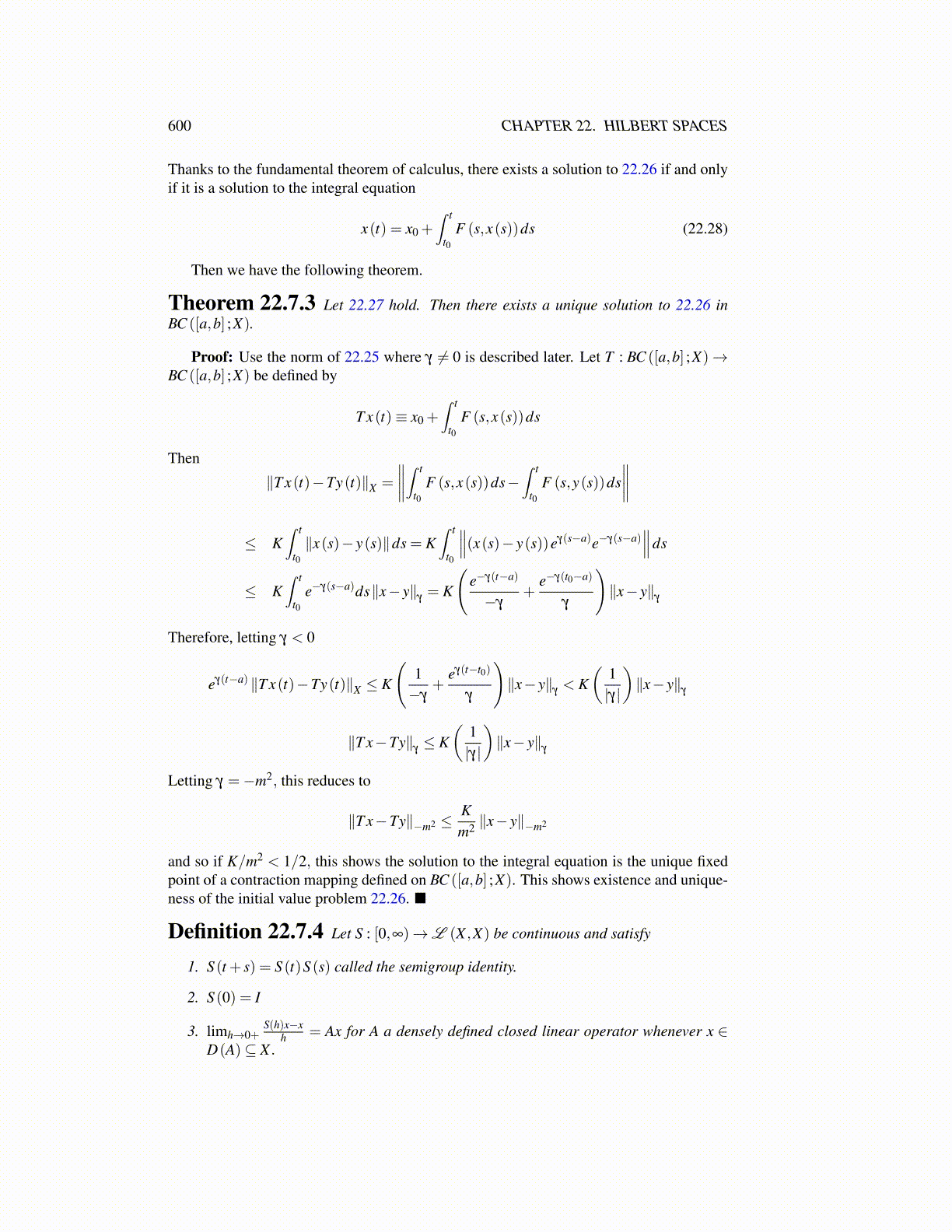
600 CHAPTER 22. HILBERT SPACES
Thanks to the fundamental theorem of calculus, there exists a solution to 22.26 if and onlyif it is a solution to the integral equation
x(t) = x0 +∫ t
t0F (s,x(s))ds (22.28)
Then we have the following theorem.
Theorem 22.7.3 Let 22.27 hold. Then there exists a unique solution to 22.26 inBC ([a,b] ;X).
Proof: Use the norm of 22.25 where γ ̸= 0 is described later. Let T : BC ([a,b] ;X)→BC ([a,b] ;X) be defined by
T x(t)≡ x0 +∫ t
t0F (s,x(s))ds
Then
∥T x(t)−Ty(t)∥X =
∥∥∥∥∫ t
t0F (s,x(s))ds−
∫ t
t0F (s,y(s))ds
∥∥∥∥≤ K
∫ t
t0∥x(s)− y(s)∥ds = K
∫ t
t0
∥∥∥(x(s)− y(s))eγ(s−a)e−γ(s−a)∥∥∥ds
≤ K∫ t
t0e−γ(s−a)ds∥x− y∥
γ= K
(e−γ(t−a)
−γ+
e−γ(t0−a)
γ
)∥x− y∥
γ
Therefore, letting γ < 0
eγ(t−a) ∥T x(t)−Ty(t)∥X ≤ K
(1−γ
+eγ(t−t0)
γ
)∥x− y∥
γ< K
(1|γ|
)∥x− y∥
γ
∥T x−Ty∥γ≤ K
(1|γ|
)∥x− y∥
γ
Letting γ =−m2, this reduces to
∥T x−Ty∥−m2 ≤Km2 ∥x− y∥−m2
and so if K/m2 < 1/2, this shows the solution to the integral equation is the unique fixedpoint of a contraction mapping defined on BC ([a,b] ;X). This shows existence and unique-ness of the initial value problem 22.26. ■
Definition 22.7.4 Let S : [0,∞)→L (X ,X) be continuous and satisfy
1. S (t + s) = S (t)S (s) called the semigroup identity.
2. S (0) = I
3. limh→0+S(h)x−x
h = Ax for A a densely defined closed linear operator whenever x ∈D(A)⊆ X .